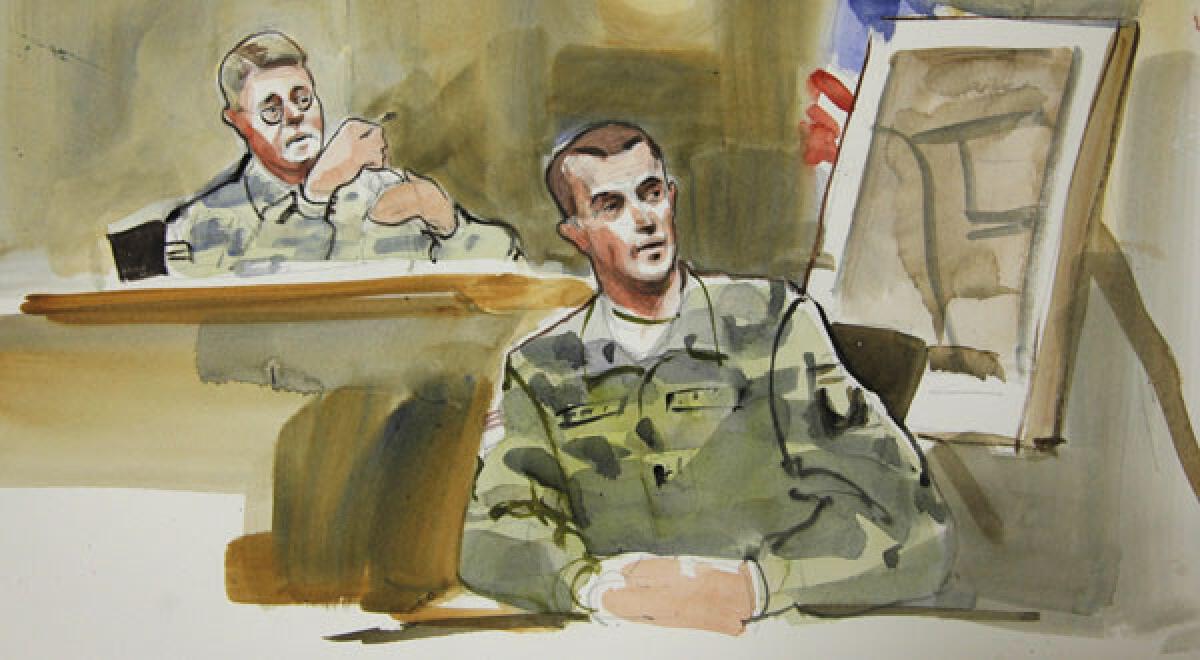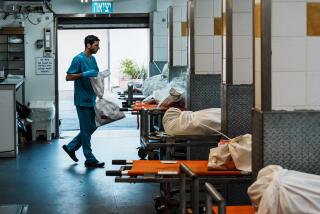DNA, fiber evidence link Bales to slayings, witnesses say

JOINT BASE LEWIS-McCHORD, Wash. — Army Staff Sgt. Robert Bales was covered in blood when he walked back to his base in southern Afghanistan after a nighttime attack that left 16 civilians dead, and samples from his clothing have been positively matched with blood found at the scene of the shootings, an Army investigator testified Thursday.
Christine Trapolsi, a DNA analyst at the U.S. Army Criminal Investigative Laboratory, said she identified the blood of four people on various parts of Bales’ pants, shirt, boxer shorts, gloves, boots and weapons. The blood of one woman was found both on Bales and in the blood-spattered home of Mohammed Wazir in the village of Najiban, where 11 people died. Five other people died elsewhere.
The testimony at Thursday’s prelminary hearing for Bales in a military courtroom was technical but crucial: Alhough Army investigators could not take samples from the bodies of the victims to establish positive links between them and their killer, the DNA evidence appeared to establish conclusively that Bales was at the scene of the killings.
A fiber expert also testified that five different kinds of fibers found on Bales’ clothing were also found on a pillowcase at Wazir’s home.
There was a less-conclusive similarity found between fibers from the clothing of some of the five people who sought treatment for injuries sustained in the attacks — some of which were of a distinctive fiber type normally found in South Asia, but not in the United States — and a fiber found on Bales’ glove, said the analyst, Larry Peterson, who also works for the Army crime lab.
Both “have a construction that you would not see in textile materials” in the U.S., Peterson said. But, he added, “they do not match.”
Army investigators were hampered by a three-week delay in reaching the scenes of the March 11 shootings because of safety concerns, and by Afghan villagers’ refusal to allow the victims to be examined before burial.
Autopsies could not be conducted, and Army investigators cannot say whose blood was found on the walls and floors of some of the four homes where the shootings occurred.
Bales himself was covered in blood -- fellow soldiers, most of them veterans of the conflicts in Iraq and Afghanistan, testified that they had never seen so much blood on anyone.
A stain described as “massive” was one of 219 stains on his pants, which had soaked through to his boxer shorts, witnesses said. There was also blood on his boots, gloves, shirt, socks, belt, rifle (including inside the barrel), pistol, ammunition magazines, grenade launcher and night vision goggles, they said.
On Bales’ clothing, investigators testified that they found positive DNA matches to two men and two women. Precisely which men and which women will probably never be known.
ALSO:
Giffords’ husband to shooter: You didn’t dent her spirit
Jared Loughner sentenced to life in prison for Tucson shooting
New York Gov. Andrew Cuomo: nor’easter made ‘bad situation worse’
More to Read
Sign up for Essential California
The most important California stories and recommendations in your inbox every morning.
You may occasionally receive promotional content from the Los Angeles Times.








